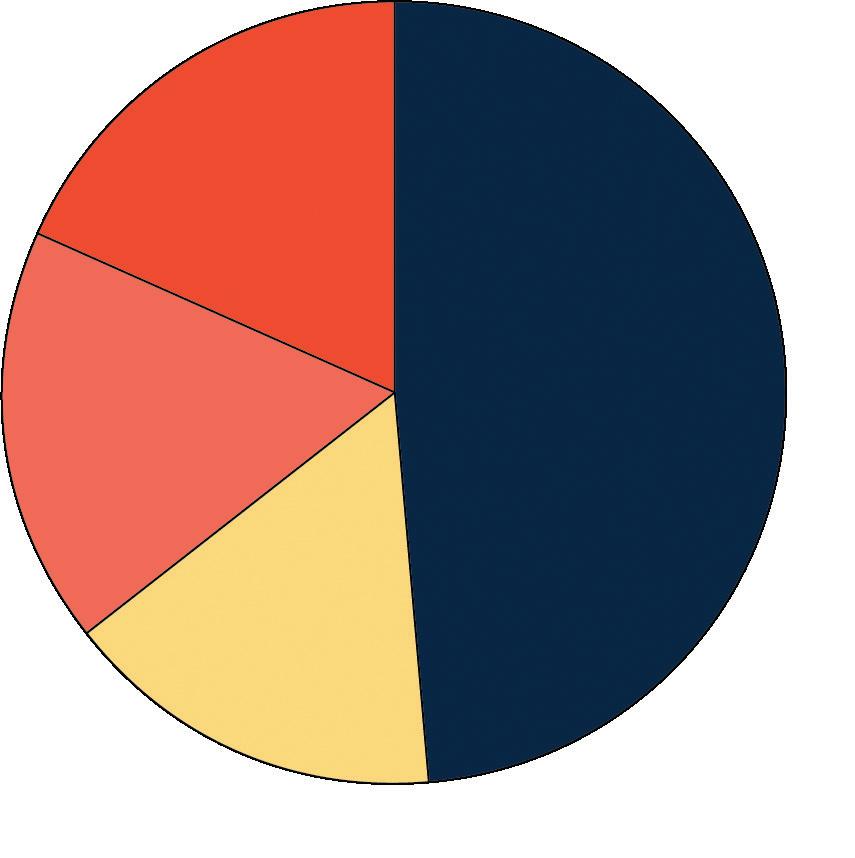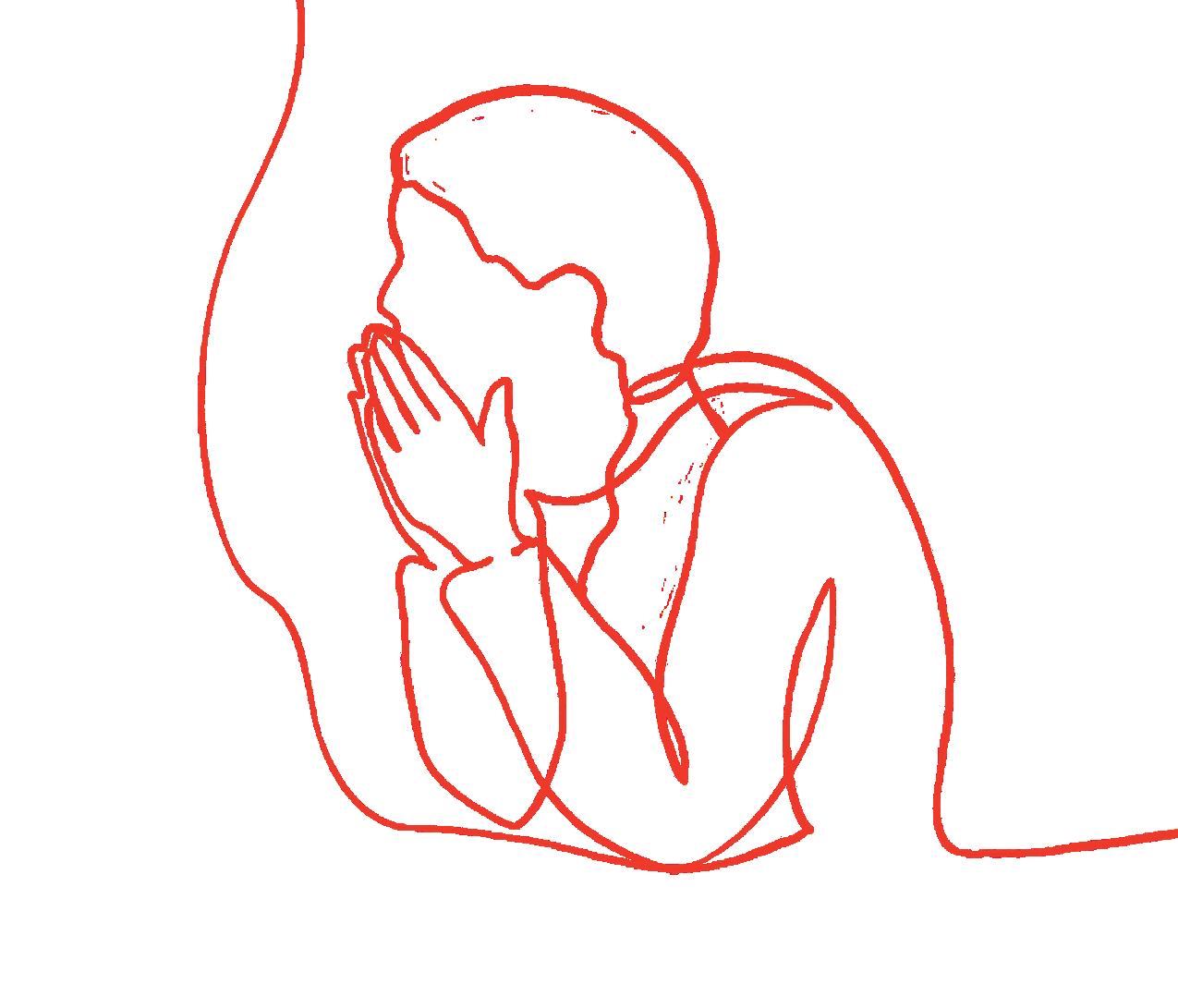
6 minute read
MAIN CAUSES OF BURNOUT IN PALY ATHLETES?



ten lead to burnout.
Senior Rachel North played soccer her entire life, competing at the club level for Palo Alto Soccer Club and had full intentions of playing at the collegiate level. After playing on broken bones that were not given proper time to heal for months, North now needed bone removal surgeries on both feet. The two surgeries, done a year apart from one another, left North with persistent pain and inability to continue to play, forcing her to quit playing the sport.
“I wish that this wasn’t the outcome, but [the surgery] was a forced decision,” North said. “I really miss [soccer], though it is something I can be thankful to look back on.” letes, North and Kasanin includ ed, continue to play while hurt, worsening the inital injuiry. Fur thermore, the recovery process can be frustrating and draining through hours of physical ther apy while watching teammates and friends continue to play.
“I had to go through a lot of physical therapy, which I did not take seriously, so my gait did not heal and the doctor said that I couldn’t play soccer for the season,” Kasanin said. “This was frustrating but also my fault.” position, differing team and individual expectations, or unhappiness with practice schedule, can shift the amount athletes enjoy what they are doing, making the sport more mentally draining and less fun.
Paly junior Gali Nirpaz used to dive competitively for the Stanford Diving Club. She made the difficult decision to quit the team her sophomore year because of an array of factors, mostly based on the environment she found herself in when competing at a higher level.
“When sophomore year hit I was put on a higher team with a coach that did not like me,” Nirpaz said. “I was put in a group that I did not like at all. I was away tioned, sports are designed as a place to have fun and relax. It is a way for athletes to block out the stress of school, work, and real life. However, when the athletic environment becomes loses it’s excite ment, it is no longer a mental escape. This leads to add ed stress and often burn out. LaMere reflects on how coach es perceive this.
“If there point where I was completely breaking down every practice,” Nirpaz said.

“I stopped pushing myself as much as I
However, coaches are there to help. Communication between athletes and coaches is key. Talking through taking a break, or shifting practices to make the sport more enjoyable again to the athlete can exponentially improve the mental well-being of an athelte. As LaMere points
Spending all or most of one’s younger years playing exclusively one sport can lead to injuries or burnout. When this happens, athletes are often left con fused and lost; not knowing what to do next. After years of intense physical ac tivity, It can be hard to find other ways of getting exercise or finding that spe cial group of people that one would find within a team. North, after losing soccer due to injuries, found weight training as a passionate re placement.
“The lack of
Athletes tend to be experts at pushing themselevs, always going faster, always working harder and wanting more. What is so challaning, however, is the knowl edge that the only way to get better is to take time off and let the body heal. Sometimes this means people continue to play regardless of injuries, further and more seriously hurting themselves or becoming overly frustrated by the recovery time and quit playing the sport all
“This injury mainly led to a lot of frustration, because I just kept wanting to go out and play, and each time I tried [to play], it would still hurt,” Kasanin said. “Because my gait had been messed up for so factors one way or another, it is inevita ble that people will need breaks, even though not all athletes leave their sport. since she was a toddler, she felt lost. After all, losing a sport is like losing a part of yourself. She had to find new things that she enjoyed and not just do things because she was good at them.
Craig, went through a lot of tough decisions when she decided to quit soccer to continue running. She spent years debating whether or not to quit soccer until all the factors lined up.

Although she felt like her soccer team’s condition was very toxic, Craig’s coach was very supportive through the whole process. After months of choosing not to quit soccer, the final push to quit was when Craig had to receive a double foot surgery to fix an injury. She found that there wasn’t enough time or energy for her to balance participating in both soccer and running.
After many long discussions with her parents and coach, Craig’s decision had no impact on her relationship with the coach and her old team mates.
“I think people need to realize that [they’re] allowed to leave,” Craig said.
“With running, it allowed me to like find things that I’m passionate about,” Threlkheld said, “I got to test things out and now I have a like a better understanding of who I actually am rather than like who I thought I was.”
Although Threlkeld had regrets at first but found herself in a new community that was supportive and different from the competitiveness she was wanting to get away from.
Similarly, Craig found a community that she adored, and discovered a sport that she was very good at and loved. From being apart of a very competitive and toxic environment she found this change refreshing.
“I wasn’t as social because I didn’t really have a lot of good friends on the soccer team, it was basically just the ones who went to the school,” Craig said. “Now after I quit, I’ve branched out with my friends through all the grade levels. And we do so many team bonding things as a team and I enjoy going to practice so I think overall, I’m just a lot happier.”
Feeling initial regret or sadness was a common theme among athletes who ended up quitting their sport. However, they often found themselves in a new light and discovered what they really enjoy doing.
Other athletes pick up completely unrelated sports to their previous one. Kasanin, for example, took a long time to recover from his injury. When he came out on the other side of it, he explored some of his other interests and found hobbies were less painful than playing soccer on an injured foot.
“I decided to pick up tennis and later surfing.” Kasanin said, “I now teach surfing every weekend in Half Moon Bay, which has been a great experience and something that I wouldn’t have picked up if I was still playing soccer.”
After finding new things to enjoy, these athletes discover a new sense of self and feel that they become a better version of themselves.
Mental health issues have become a really prominent issue in today’s society. The effects of having good mental health is shown to be very beneficial to overall quality of life. Schools across the country are beginning to prioritize mental health over anything else by giving students access to wellness needs. However, not many athletes have had the same experience. It is much harder for athletes to cope with sports-related mental health issues, due to the lack of knowledge and research, along with the stigma surrounding the idea.
Many athletes across the world are effected by burnout, whether they realize it or not. There are many ways that cause burnout, whether it be internal pressures, external pressures, bad environments, injuries, and much more. The line is drawn once a sport becomes mentally overwhelming, rather than a mental escape. The mental and physical stress that comes with it is something that should be addressed more.
“For any of these students if they are student athelets or not, go talk to someone, reach out to a coach or a teacher,” LaMere said. “If you stop doing it doesn’t mean that you’ve failed. Sometimes change can be great.”
Thoughts from Paly Athletes on Preventing Burnout:
“More patience from myself as an athlete and accepting I won’t always be at the top of my game, letting myself take time for improvement to kick in after making a major change to my technique.”
“Taking breaks and decreasing the amount of time I have spent swimming has significantly decreased the amount of pressure by myself to do well, since I don’t care as much anymore, and has made the sport fun again because I was doing it ‘just because.’”
“Your value is not tied to your sport.”
“Coaches should do better to understand that as much as we love the game we play, we have so many things to do. Being a senior is tough while playing a fall sport, doing college applications is the most stressful thing during high school. I wish they knew that missing some type from practice to do school work is okay.”
“My team had a lot of hierarchal issues, people thought they were better than each other. It put a lot of pressure on me to be really good. I think it could have been fixed if there was more leadership from the captains and coaches to get us all on the same page.”
“Athletics should be a safe enviornment where the pressures of the rest of one’s life don’t affect them.”










